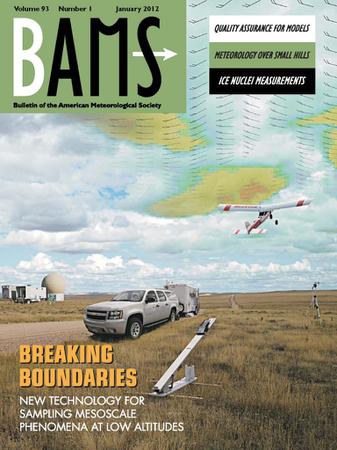地球和火星上的热赤道
IF 5.9
1区 地球科学
Q1 METEOROLOGY & ATMOSPHERIC SCIENCES
引用次数: 0
摘要
摘要 热赤道(又称热量赤道)是代表各经度最高年平均温度的一组环行星点。最新的地球和火星高精度全球数据集为详细计算这两个世界的热赤道提供了依据。在地球上,构成热赤道的温度值范围为 25.85° 至 34.75°C,平均温度为 27.75° ± 1.3°C,纬度最高延伸至墨西哥的北纬 20°和印度次大陆的北纬 29.3°。最南端为澳大利亚的南纬 20°。在没有海洋的火星上,热赤道的轨迹较为简单,大致与赤道平行,偏移 5°-10°S。不过,在火星上有一个经度区域,热赤道变成了双峰形,北端分支以北纬 10°为中心,南端分支以南纬 20°为中心。本文章由计算机程序翻译,如有差异,请以英文原文为准。
The Thermal Equator on Earth and Mars
Abstract The thermal equator (also known as the heat equator) is the circumplanetary set of points that represent the highest mean annual temperature at each longitude. Recent high precision global datasets for Earth and Mars provide a basis for a detailed calculation of the thermal equator on these worlds. On Earth, the temperature values that comprise the thermal equator range from 25.85° to 34.75°C, with a mean of 27.75° ± 1.3°C, and extends in latitude as high as 20°N in Mexico and 29.3°N in the Indian subcontinent. The maximum southern extent is 20°S in Australia. On Mars, lacking oceans, the thermal equator takes a simpler track and is roughly parallel to the equator, and displaced 5°–10°S. However, there is a region of longitude on Mars where the thermal equator becomes bimodal with a northern branch centered at 10°N and a southern branch centered at 20°S.
求助全文
通过发布文献求助,成功后即可免费获取论文全文。
去求助
来源期刊
CiteScore
9.80
自引率
6.20%
发文量
231
审稿时长
6-12 weeks
期刊介绍:
The Bulletin of the American Meteorological Society (BAMS) is the flagship magazine of AMS and publishes articles of interest and significance for the weather, water, and climate community as well as news, editorials, and reviews for AMS members.

 求助内容:
求助内容: 应助结果提醒方式:
应助结果提醒方式:


